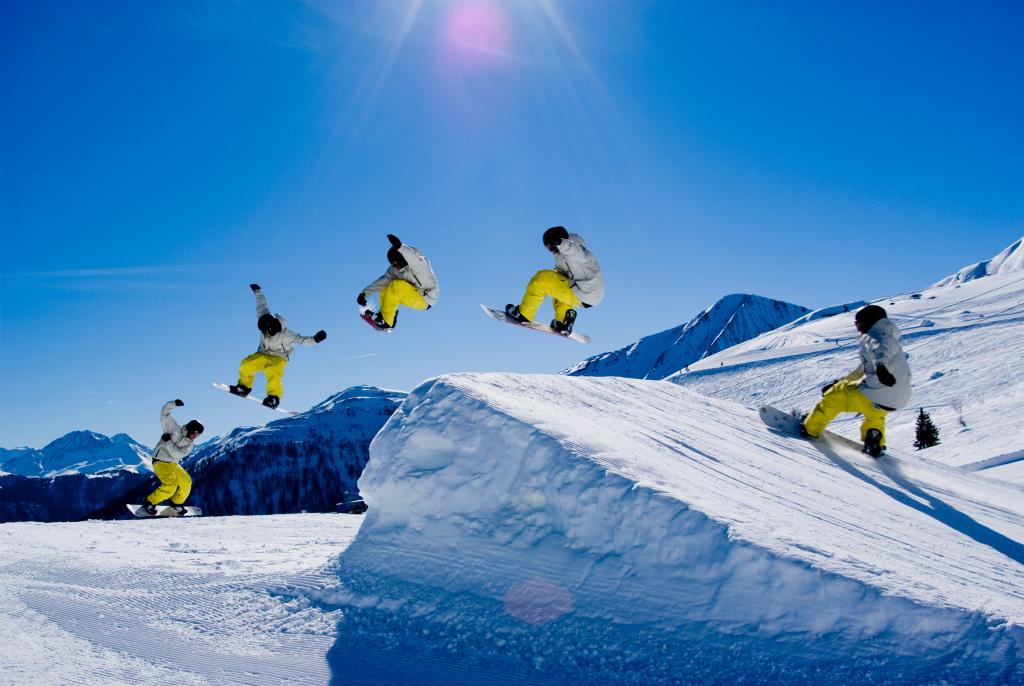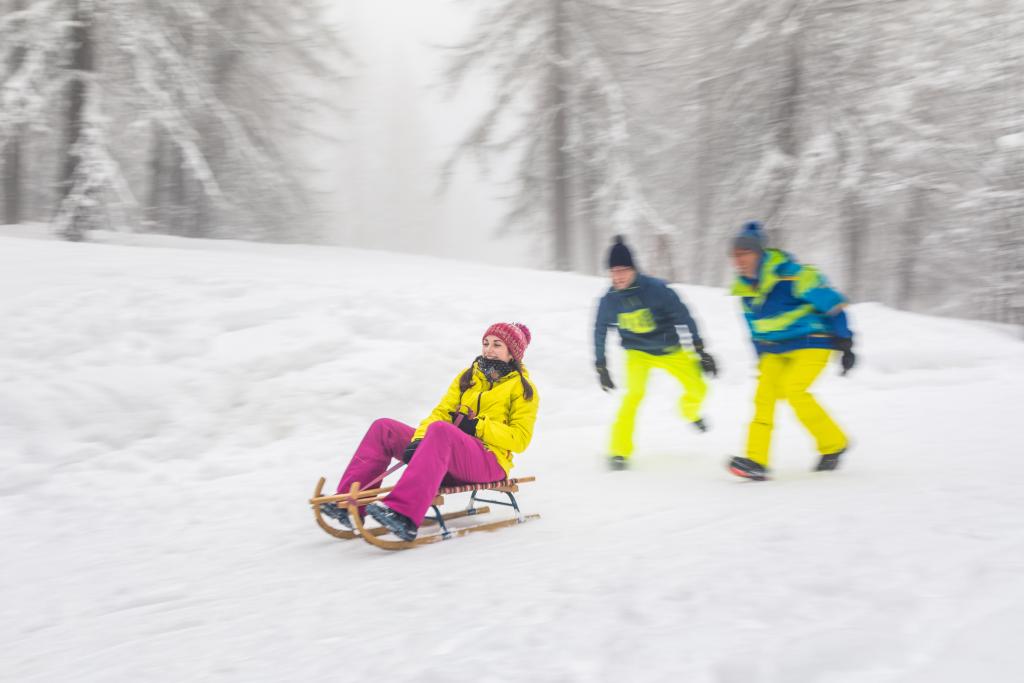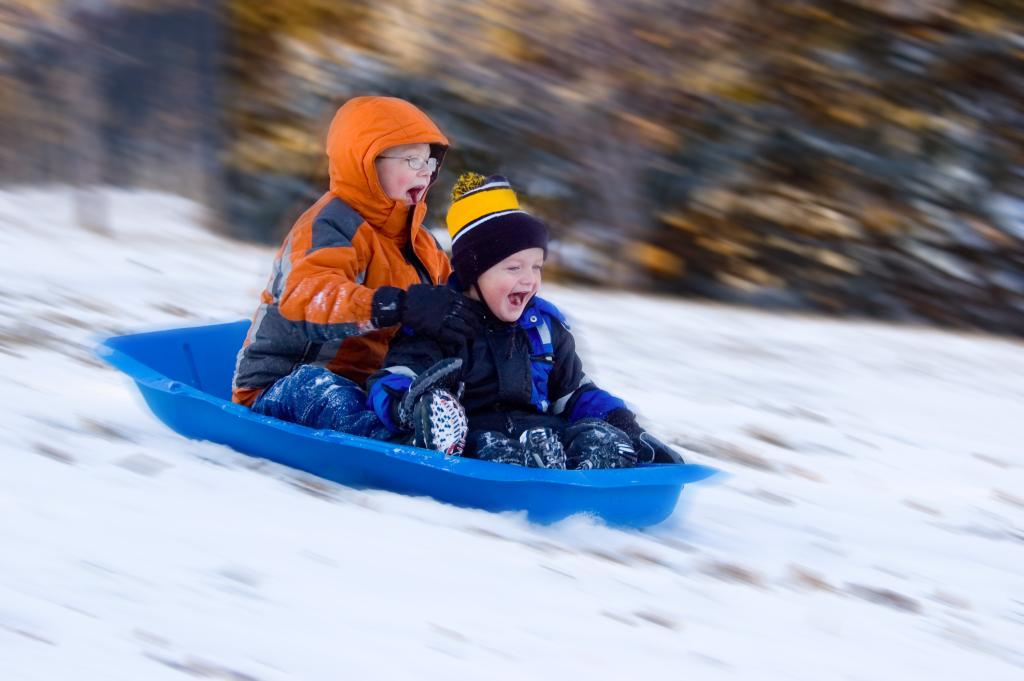
How to Take Great Photos on Ski Slopes
Capturing Winter Subjects in Motion
A Photo Book that you have designed yourself from ifolor is a great way to bring together all your snapshots from the slopes and relive your favourite winter moments again and again.
A Photo Book that you have designed yourself from ifolor is a great way to bring together all your snapshots from the slopes and relive your favourite winter moments again and again.
You can capture your best winter holiday photos in a unique Photo Book. Read our article to find out how you can showcase your winter highlights and keep your favourite winter memories alive.
Lens selection and distance
Many sports photographers seem to be almost grown into their 300 to 400-millimeter lenses, but are not aware that simple wide-angle or fisheye lenses in the 12 to 30 millimeter focal length range can also take fantastic pictures.
Small action cams can be attached directly to your body or your snowboard and, with an extreme wide angle, can help you take exciting shots.
How to capture speed dynamically?
In order to capture winter sports athletes in action, the so-called “going along” or “panning” technique is a good option. This technique involves displaying the actual subject focused and the background dynamically out of focus. At this moment, some athletic activity is necessary from your part because your subject must be followed with the camera. Depending on the distance of the athlete from the camera, you have to move relatively quickly and as steadily as possible so that the skier himself remains focused.
How «panning» works
The “going along” technique works particularly well when you aim at a distinctive point and thus can always keep the subject in focus. You can also ask the athlete to move as steadily as possible so that the camera doesn't move too jerkily. It is best to go through your movements a few times beforehand. When you feel ready, you follow the subject and constantly release it. Make sure that you do not interrupt the panning of the camera while it is being released.

Panning photos come out especially nice if you set a long exposure time. If the exposure time is too short, the background of the movement will be frozen in a clear image. The point here is: practice and experiment. As benchmark, use an exposure time of 1/15 for slow athletes and 1/60 second for fast athletes. Since long exposure times can lead to overexposure, especially on sunny winter days, you should set the ISO to a low setting and the aperture to a high value.
Selecting the subject for “panning”
As the subject, choose an athlete with steady movements who can keep a constant distance from the camera at best. When the athlete moves towards you, the distance to your camera changes extremely quickly and so you can hardly capture the subject clearly. Therefore, you should rather photograph athletes from the side.
Children on their sleds are excellent for practicing camera panning and are always a nice subject. You can also aim at snowboarders or ski jumpers on the slopes from the side and take exciting stunt photos. If you want to practice this technique, you can first try with trains or trams. These usually drive very steadily and you can find a perfect location for taking pictures of them in advance.
Tip
Preserve your best shot from the ski slopes or tobogganing on a stylish wall decoration. Turn your favourite snow moment into a centrepiece for your home using a photo canvas, aluminium Dibond, or acrylic glass etc.

Automatic mode or manual focusing
Most digital cameras and smartphones have a special sport mode. Provided there is enough light, the automatic mode tries to capture the movement sharply with the aperture as open as possible and a fast shutter speed.
Manual focusing is more exciting and somewhat more demanding, as it allows you much more freedom when it comes to creating images and playing with focus. Since the right moment to take a picture can be over in a split second, you should be well prepared and best use the serial image function of your smartphone or camera. Doing so, you won't miss the perfect moment to take a picture.
Experiment with the exposure time
The right shutter speed is selected depending on the speed. In semi-automatic mode, your camera will continue to control the rest itself. If you are unsure which exposure time is right, simply try different times (1/125, 1/250, etc.). You can either freeze moving objects or display the movement with dynamic blur. Since a certain amount of light is required for a correctly exposed photo, it will be more difficult to focus on fast movements in dark moments.
When dusk comes, you can increase the ISO value and gain some time to take pictures. Many smartphones also offer an advanced mode in which the ISO value and the exposure time can be set manually. On sunny winter days you should choose a low ISO value (usually ISO 50 or 100). In cloudy weather or in the evening hours, however, you should choose a higher ISO value.
Taking pictures with flash and the right format
If you use the flash when you take pictures, you can enhance the image effect – as long as the athletes are not disturbed by it and you are close enough to the action. The flash is recommended as a light brightener for pictures taken against the sun. To do a better job at editing errors later, it is recommended to take the pictures in RAW format. The resulting files are considerably larger, but you will be able to fix some errors in the exposure with just one click.
Tip
For more tips on taking photos in the snow with your smartphone or camera, read our ‘Shooting Brilliant Winter Sports Photos’ article.
How to protect your camera when taking pictures in winter
While we can wrap ourselves up cozy and warm in the cold winter, cameras are usually exposed to the freezing cold. Generally speaking, that's not a problem as long as you consider a few simple things. The battery power of your camera will drop rapidly in the cold. A spare battery, batteries or a power bank in the warm jacket pocket are therefore a good companion for ski slopes. From time to time you can see photographers who put tape on their cameras. This makes perfect sense if your camera has a metal surface. It also helps protect your own skin, as metal can stick to your skin when it's very cold.
After a great afternoon in the fresh air, we look forward to a warm room, but our equipment doesn't like the rapid temperature change so well. So it's best to leave your camera in your pocket for a while, rather than unpacking it immediately. Because of the quick change, condensation water forms on and sometimes in the camera and lens. This is usually not bad, but of course it prevents the camera from being used immediately. If you would rather make sure that your camera does not suffer condensation damage, there is a simple trick: Pack the camera securely in a plastic bag so that no water can form on the camera.
